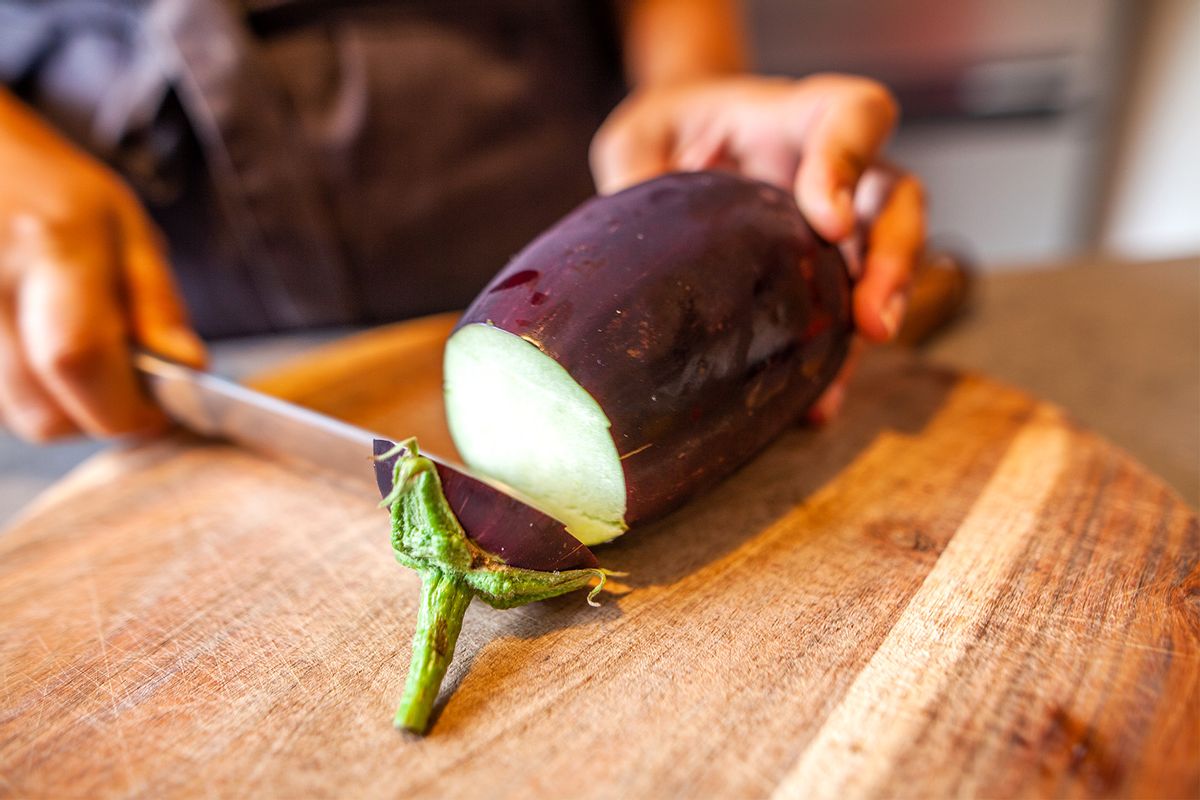Here’s how to pick — and cook — a better eggplant

Eggplant parm, baba ghanouj, eggplant curries, eggplant rollatini — it’s all so good! Supple, creamy, substantial, rich, porous, eggplant is a gem.
I admit, though, eggplant isn’t the easiest to work with. Its preparation raises a lot of questions: Do you salt or not? Do you cube or slice? Do you use large or baby? I can cook arguably any ingredient, but there are two that I’d say most often gives me issues, if you will. The culprits? Eggplant and zucchini.
Eggplant’s inherent porousness sometimes makes it a true oil-suck, which is oftentimes not ideal. If you’ve ever tried to sear eggplant, but instead just infused it with inordinate amounts of oil and made it squishy and unappetizing. Trust us, you are not alone. Yet when you get lucky and it turns out right? Eggplant can be insurmountable.
By default, I look at all things food through a decisively “abbondanza” lens, if you will. This certainly applies to eggplant. Back in summer 2020, I donned a few masks and headed on over to a good friend’s house. Instead of putting out hummus and pita or chips and dip, she merely placed a plate of her grandmother’s leftover eggplant on the table.
It was, quite possibly, the single best bite of eggplant I’d ever had in my life.
With nothing more than eggplant, tomato, flaky salt, some Parmigiano, and perhaps some secret ingredients, my friend’s Nonna was able to coax out more of an “eggplant” flavor to mingle with the savory notes of tomato and parm. It wasn’t a heavy, laden mass baked behemoth with bubbling mozzarella (though I wouldn’t turn that down either, of course). It was a simple, unvarnished display of eggplant’s power. My friend’s Nonna had a real nuance and a light touch: The eggplant was thin as paper and so subtly seasoned, but deeply, immensely flavorful, so complex and rich. We ate it at room temperature, voraciously, until there was nothing left on the plate but some errant swipes of tomato, the flavors dancing and lingering on our tongues.
I fondly think of that dish often.
In order to ensure that your next eggplant dish is as good as can be, here’s a handy guide to help you avoid any common pitfalls. So, if you have a few eggplants on hand, here are your top tips for the best end result: nothing squishy, soggy, bitter or unappetizing here.
Be mindful of eggplant sizing when choosing; those enormous, bulbous grocery store eggplant can sometimes be bitter or overly seed-y, while some of the smaller ones are easier to handle and generally taste a bit better. That said, it’s important to use particular eggplants for particular uses; you’ll need a different eggplant for baba ghanoush than you would for eggplant rollatini, for example.
Ideally, the one you buy should have taut, glossy skin with a bit of shine, should feel “heavy for its size,” and the top should be verdant, bright and sturdy. The eggplant should be firm to the touch with just a bit of give.
Also, this is the literal perfect season for eggplant, so if you’re reading this and now suddenly craving it — go get some! It’s terrific right now.
I think how you cut the eggplant is very important. I like planks over thick slices, but sometimes uber-thin, gossamer slices are the perfect option depending no your application.
As far as salting, I like doing a little spritz to help draw out moisture and bitterness, but not overdoing it; some people salt and press for an hour or more, but that never seems entirely necessary.
I’m also a peeler. Anne Burrell used to peel half the eggplant, which I thought was cool idea. The skin always gets in the way for me in cooked eggplant dishes, so sometimes I’m down to just peel it all off entirely. Up to you, though!
Some like to “cross-hatch” their eggplants, which is fine and looks cool, but I have never done that. It seems entirely aesthetic and I don’t think it does too much, but one could make the argument that it’d allow for more sauce, seasonings and therefore flavor to penetrate the eggplant.
Another idea is to marinate the eggplant; sometimes people like to think marinades are just for protein, but for a more flavorful experience, try different marinades. Just don’t let it marinate for too long or it might get stringy or mushy. Brining is also a good option
Eggplant is great no matter how it’s cooked, really. From grilling and roasting to frying or sauteing, you’re good to go no matter what. It’s all a matter of preference. A stuffed eggplant is also a great option; the vegetable itself is a wonderful vehicle for whatever fillings or flavors you’d like it to carry. Even microwaved works!
One quick tip: Don’t don’t undercook it! A quasi-cooked eggplant is never appealing. Eggplant is pretty difficult to “overcook,” so don’t stress about pulling it too late.
Now that you’re equipped with this indispensable eggplant intel, go forth — and make an especially delicious eggplant dish this week.
Read more
about this topic

